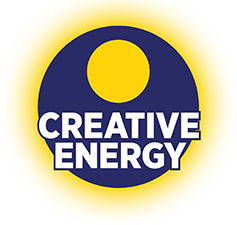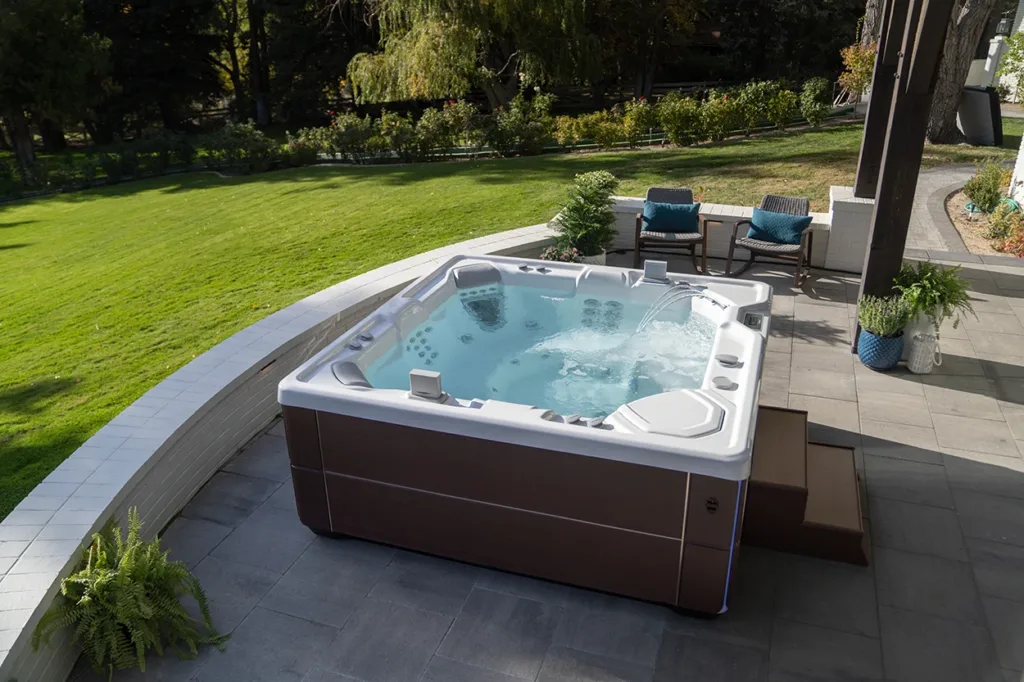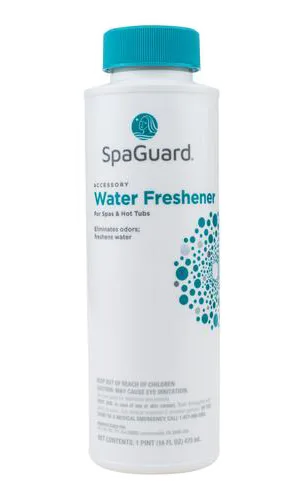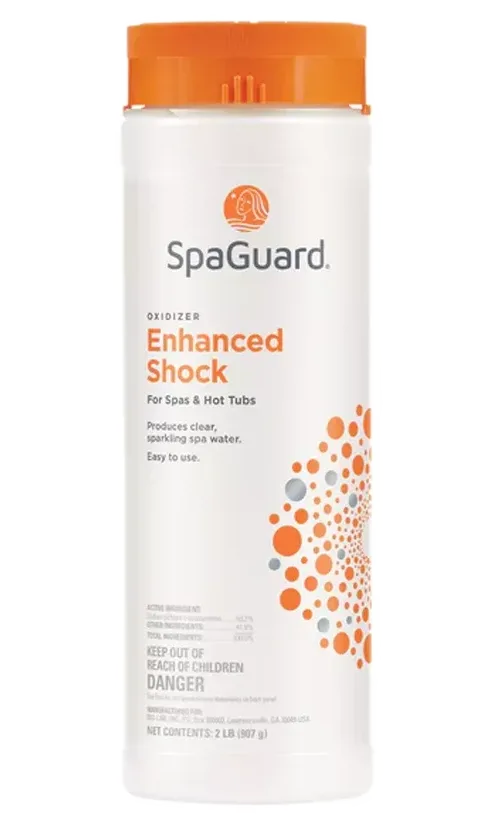Imagine spending all day looking forward to a relaxing soak in your hot tub, only to open the lid and find cloudy, murky water inside. Frustrating, right? Luckily, water care products like clarifier and shock treatment help keep your hot tub clean, safe, and enjoyable every time. While both help improve water quality, they work in distinct ways and are designed to address different issues. In this guide, we break down the differences between hot tub water clarifier vs shock treatment, explain when (and why) to use each, and share expert tips to keep your spa water clean, clear, and perfectly balanced.
What’s the Difference Between Hot Tub Water Clarifier vs Shock Treatment?
Water clarifier and shock treatment are different types of chemicals used to maintain water quality in your hot tub. They both eliminate contaminants that cause cloudiness, but target different root problems to do so:
- Water clarifier: targets non-living contaminants
- Shock treatment: eradicates organic (living) particles like algae and bacteria
Water Clarifier vs Shock Treatment
Below is a table that showcases the main differences between these two treatments:
| Water Clarifier: | Shock Treatment: | |
| Targets: | Non-living particles like dust, oils, and lotions | Bacteria, algae, and other organic (living) contaminants |
| Function: | Binds small particles together to make them large enough for the filter to trap | Kills bacteria and algae, oxidizes contaminants, and supports sanitizer |
| Effects: | Does not affect pH levels | Chlorine shock treatments will impact pH levels |
Hot tub clarifier eradicates non-living particles like dust and oils, while shock treatment targets organic contaminants like algae, bacteria, and more. By understanding the difference between water clarifier vs shock treatment and how to use them correctly, you can keep your hot tub water sparkling clean and safe for your next relaxing soak.
Can I Use Water Clarifier and Shock Treatment Together?
The short answer is no—it’s not a good idea to combine different chemical solutions because they may interact unexpectedly, potentially leading to safety issues. Your water clarifier may also be destroyed by the chlorine in your shock treatment before it gets the chance to work.
Use clarifier first, or wait at least a full day after shock treatment before adding clarifier.
What is Hot Tub Water Clarifier?
Water clarifier is a liquid treatment that helps remove non-living particles like dust, dirt, oils, and lotions from your hot tub. Sometimes, these particles are too small for the filter to trap, causing them to build up in the water and make it cloudy or smell.
Clarifier bonds to these particles and clumps them together, making them large enough for the filter to capture and remove from your spa.
How to Use Water Clarifier
To use water clarifier in your hot tub, follow these steps:
- Make sure your filter and pump strainer are clean.
- With the pump running, pour the recommended dosage (included on the product label) directly into the hot tub water. This is often measured in capfuls.
- Check the filter pressure regularly. If it gets too high, clean or backwash it.
- If the water isn’t clear after 24 hours of continuous filtration, add more clarifier.
- Always clean the filter after using water clarifier.
How Often to Use Hot Tub Clarifier
Consider using a hot tub water clarifier about once a week, or if you notice more cloudiness than usual. Frequency may vary depending on the specific clarifier you are using, so always make sure to follow the instructions on the label.
What is Hot Tub Shock Treatment? (Oxidizer)
Hot tub shock treatment—also called oxidizer or simply “shock”—is a water care product that targets organic particles. It oxidizes bacteria, algae, and other living contaminants that your sanitizer may have missed, which helps clarify the water and reduce foul smells.
Types of Hot Tub Shock
Hot tub shock treatment is typically divided into two categories: chlorine and non-chlorine.
Chlorine Shock Treatment:
- Contains chlorine compounds like calcium hypochlorite or dichlor
- Sanitizes and oxidizes contaminants in pool water
- Raises chlorine levels in the pool
- Best used with mineral and ozone sanitizers
- Wait time: 8-24 hours
Non-Chlorine Shock Treatment:
- Chlorine-free, typically potassium monopersulfate (MPS)
- Oxidizes contaminants but does not sanitize
- Does not raise chlorine levels
- Best used with bromine sanitizers
Both types of shock treatments have advantages worth considering. If you need help deciding which product is best for your needs and hot tub, you can always consult with an expert.
How to Shock a Hot Tub
Below is a step-by-step overview of how to use shock treatment in your hot tub:
- Test the water to make sure sanitizer levels are within the recommended range.
- Turn on the pump to get water circulating.
- Following dosage recommendations on the label, slowly and evenly scatter the proper amount directly into the water.
- Leave the cover off for at least 15 minutes.
- After waiting 15 minutes, re-test the water. You may need to adjust sanitizer levels to get them back into the recommended range.
Follow the instructions on the label to determine how long to wait before using your hot tub after shock treatment.
How Often to Shock a Hot Tub
Shocking your hot tub at least once a week should keep the water clean, but you may have to increase this to twice a week if lots of people use it or if your water is cloudier than usual. Again, be sure to follow the instructions on the label of your specific product for exact usage recommendations.
Professional Hot Tub Repair, Cleaning, and Maintenance Services
For decades, Creative Energy has been a leading hot tub dealer in the Bay Area. Shop our online store and have hot tub supplies delivered directly to your door. If your spa is experiencing operational issues or just needs a good cleaning, please do not hesitate to reach out. Our technicians offer hot tub repair, maintenance, and cleaning services to the entire Bay Area, including San Francisco, South Bay, and the North Bay.




